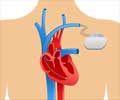New bioinformatics tools were used to analyze thousands of human tissue samples to create a new database of daily rhythms in human gene activity. This included many genes that regulate how drugs work a new step in circadian medicine.

‘New bioinformatics tools were used to analyze thousands of human tissue samples to create a new database of daily rhythms in human gene activity. This included many genes that regulate how drugs work. These findings are a new step in circadian medicine.’





Reporting in Science Translational Medicine, researchers say their results could have significant implications for a growing field of study called circadian medicine--timing the administration of drugs or other therapies to coincide with the body's internal clock. "We identified rhythms in gene expression across the body in a large and diverse group of people," says John Hogenesch, PhD, senior investigator and a circadian biologist in the divisions of Human Genetics and Immunobiology. "It doesn't matter if you're male, female, young or old, or what your ethnicity is, your body's internal clock regulates half your genome. This includes drug metabolizing enzymes, transporters, and targets. Now we are learning which drugs hit clock-regulated products and may benefit from optimizing administration time in people."
The authors stress additional studies are needed before these findings are translated into clinical practice. This includes studies in pre-clinical models, which could support future time-of-day drug administration studies in people.
"As most of these drugs are safe and approved, this process should go much faster than traditional drug discovery, which can take a decade or more," Hogenesch said.
Applying CYCLOPS
One challenge to applying biological time in clinical practice is the lack of knowledge about how the circadian clock controls rhythms in humans. To fill that gap, the researchers used their recently developed computer algorithm called cycling ordering by periodic structure, or CYCLOPS.
Advertisement
Hogenesch and his team used CYCLOPS to analyze the timing of gene-to-tissue interactions in the 13 tissue types, which came from 632 human donors. Raw data about the samples came from the Genotype-Tissue Expression (GTEx) Consortium. Funded by the National Institutes of Health, GTEx catalogues genetic variation and its influence on gene expression in and between major tissues in the human body.
Advertisement
"Overall this connects thousands of different drugs, both approved and experimental, to nearly 1,000 cycling genes," explains Marc Ruben, PhD, the study's first author and a research fellow. "We found that genes that cycle in the human cardiovascular system are targeted by many of these drugs."
Heart of the Matter
The researchers report 136 drug targets rhythmically cycling in at least one of four cardiac tissues, the atrial chamber, aorta, coronary artery, and the tibial artery. Many of these are "standard-of-care" targets for drugs used to treat heart disease, e.g. a family of drugs called calcium channel blockers. These drugs inhibit the influx of calcium into heart and blood vessels cells to promote smooth muscle relaxation and are used to treat hypertension and angina.
The researchers also discussed other challenges in putting these ideas in practice. One of these challenges is measuring body time.
"It's not as simple as taking your medication in the morning," explained Ruben. "One in six US workers are now shift workers, so while it may be morning for most, it is bedtime for some. We need a robust way to measure body time to account for this."
Source-Eurekalert









